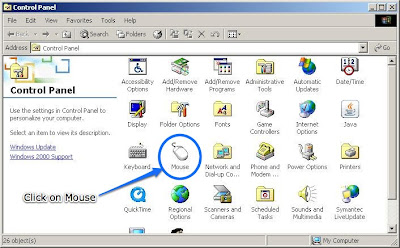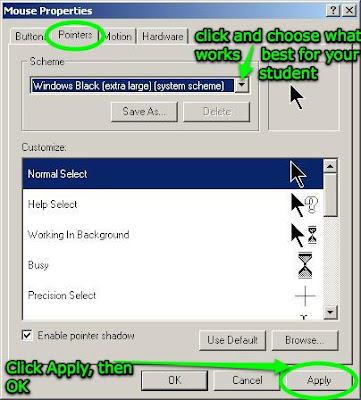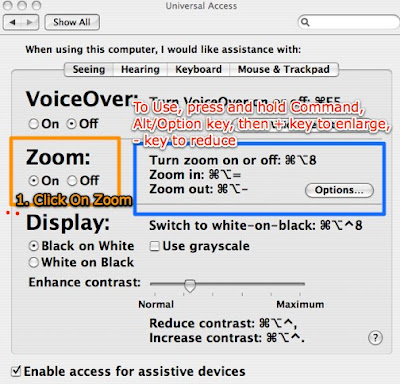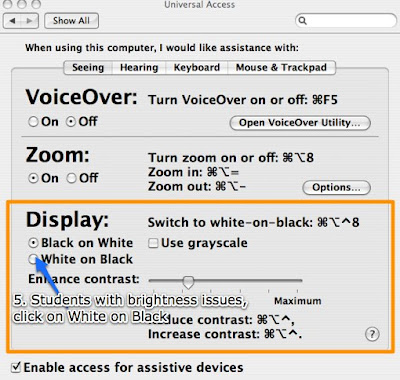Here's another great tip from Michael, along with directions to access Windows own Magnifier--did you know Windows provided this free little application for people who have limited vision?
Follow the directions below and see how it works for you/your student.
1. Press the “Windows” key on the keyboard, or left-click the “Start” icon located in the lower left corner of the computer screen.
2. Go to “All Programs”.
3. Go to “Accessories”.
4. Go to “Accessibility”. [Note: In Windows Vista it's called Ease of Access]
5. Left-click on “Magnifier”.
At this point two dialogue boxes will appear. The first is titled “Microsoft Magnifier”. This box simply describes the population that will benefit from its use. If you do not wish to see this message each time you access the magnifier, click the “Do not show this message again” box prior to clicking “OK”.
The second dialogue box is titled “Magnifier Settings”. Here you can choose your magnification level, up to nine times the size of the original. It also offers Tracking and Presentation options, including color inversion (i.e., reverse imaging).
You may resize the width of the magnification window, make it vertical rather than horizontal, or float it around the screen to a different location. Use the left-click option for this operation.
You can create a desktop shortcut by right-clicking the “Magnifier” icon before opening the program. Move to the right, and choose Send to--Desktop (Create Shortcut). Left click, and the Magnifier icon should appear on your desktop. You may rename it if desired by right-clicking on it and selecting “Rename”.
Note #1:
The magnifier comes in handy when using the built-in calculator, which has exceptionally small lettering on the function keys: + -* / =.
Note #2: The magnifier works with the High Contrast Settings.
Note #3:
Activating the magnifier tends to jumble the icons on my desktop. Be prepared!






